Prora was intended to be the world’s largest tourist resort. The Nazi party began construction on the nearly three-mile long grouping of blocks of buildings in 1936, three years prior to the outset of World War II. It is situated along the beaches of the Isle of Rügen, but it was never finished.
The Strength Through Joy (Kraft durch Freude) resort of Prorawas left derelict and neglected until 2013. Now it is owned by various developers, each owning one of the eight blocks of buildings. There is also a museum on the edge of a half-disused, half-renovated holiday camp, called the Prora Documentation Centre.
In the early part of the 2000s, multiple German developers bid for the right to renovate Prora. Block 5 of the resort was bought by Germany’s federal real estate agency in 2006. Opened in 2011, this part of the resort is now home to world’s longest youth hostel. It has 402 beds in 96 rooms.
People who want to stay at Prora can choose between hotel rooms for temporary visits, and long-term investments in the form of luxury apartments.These luxury apartments cost between $400,000 and $900,000 to buy.According to the historian Roger Moorhouse, Hitler intended for Prora to endear the German public to the Nazi party as opposed to the Gestapo which used intimidation to pacify the people.
During World War I, the Germans developed the concept of volksgemeinschaft, or “people’s community.” This embodied the idea that the German people would stand united through any trial. By 1936, this ideal was a driving force in Germany.
The original design for Prora reflected that ideology by making everything equal. Each room in Prora was to be 16 feet by just over 8 feet. They would each have two beds, one sink, and a dresser. There was no luxury suite or penthouse view.
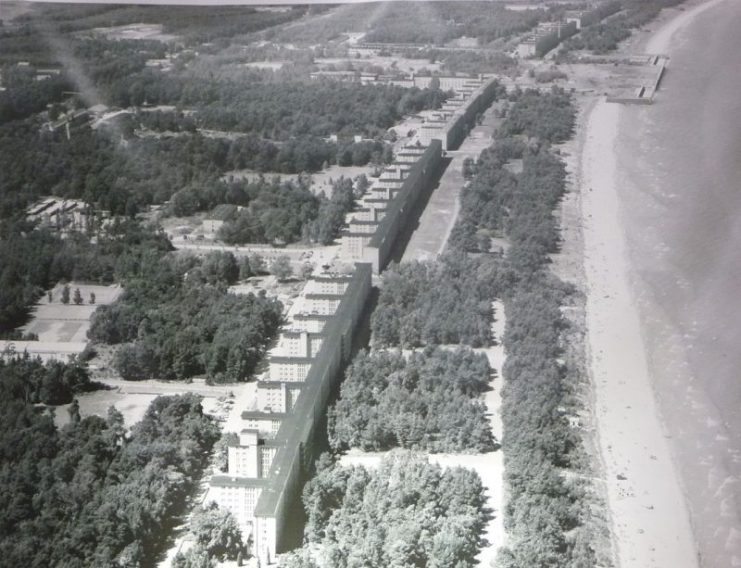
One of the highlights of Prora was the Festival Hall which Hitler commissioned Erich Putlitz to design. Included in the plans for the huge hall were two wave pools, theaters for movies and live performances, and room for every one of the 20,000 people who could stay at the resort at a time.
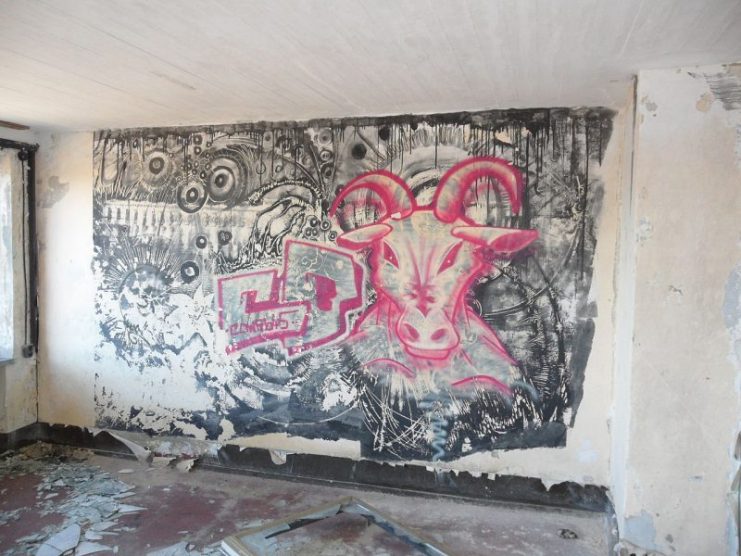
Although originally planned by KdF, the leisure arm of the German Labor Front, to be the world’s largest vacation resort, its use would largely be military before it was neglected. It was first used as a training camp for the military police of the Nazi party. Later, it was used by the East German army and eventually the United German army.
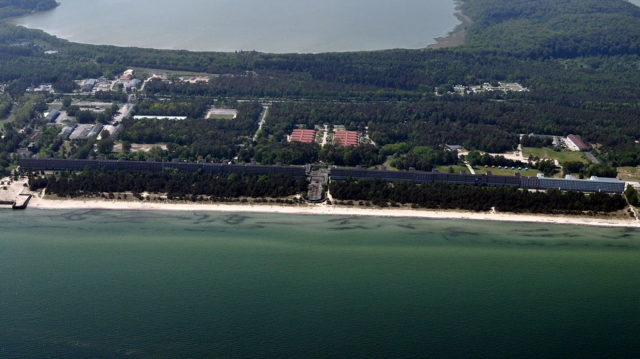
The first civilian use of Prora was for a YMCA. Some who attended the Y remember it as a bleak and dismal place.
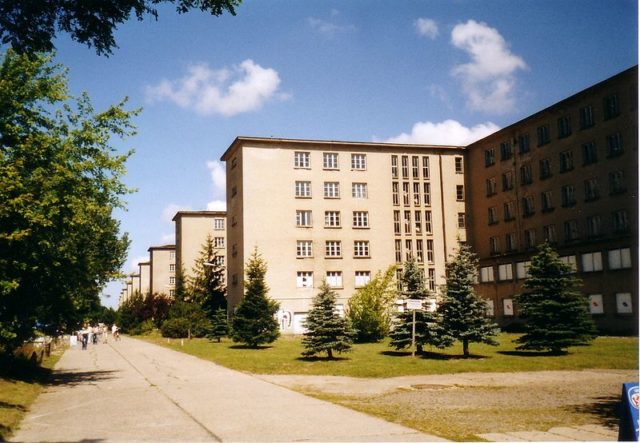
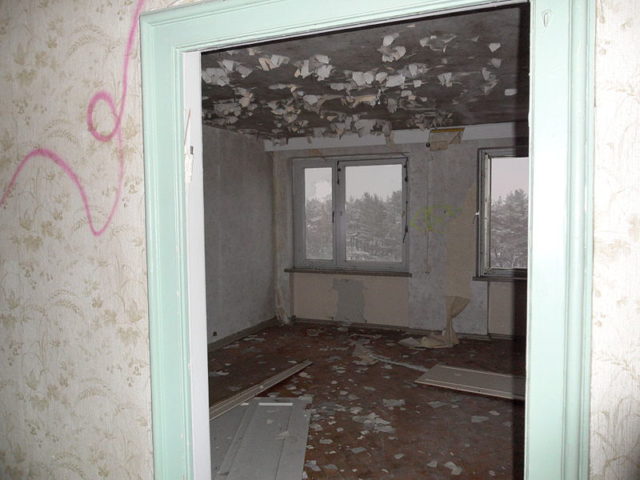
The eight blocks were originally designed in utilitarian gray concrete and allowed to fall into disrepair. Even with views of the beach from every room, the overall effect of the buildings was depressing. At one point, there were plans to educate the public about the Nazi party using the buildings as part of the exhibit. That was determined to be to cost-prohibitive and difficult so the blocks were put on sale.
Now, each of the blocks have been sold to separate developers. Some have been turned into high-end luxury apartments, one contains a youth hostel, and others have hotels.
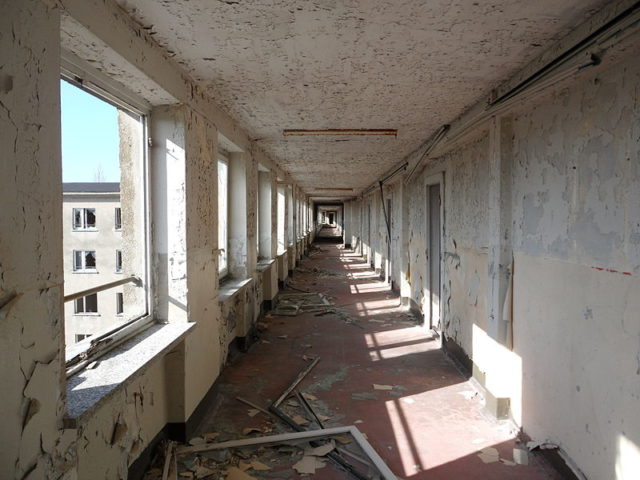
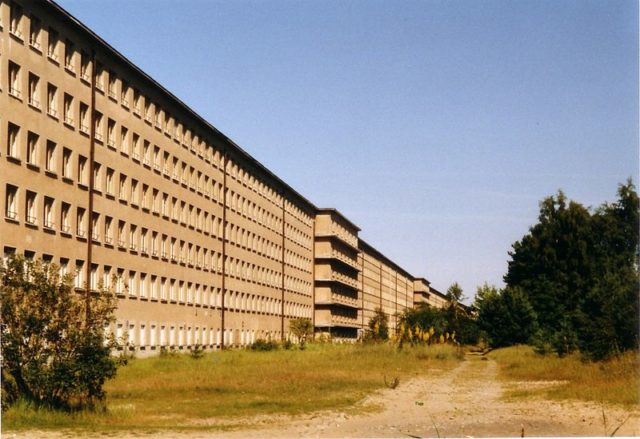
The renovations have allowed Germany to utilize a structure that was created by an oppressive regime and used to train murderers. They are able to see one of the only remaining buildings from that era and see the concept of mass tourism as envisioned by the Nazis and filtered through a modern palate.
The Alternative für Deutschland (AfD) party ran on a campaign calling for the end to what they considered “monuments of shame.” They sought to normalize Germany’s past and move forward. Prora is accomplishing exactly that and providing a beachfront view, to boot.


Today, Prora is being renovated by private investors. Four of the housing blocks are being redeveloped, one is used as a youth hotel, and the remaining three are still in ruins.
Time will tell if the Colossus, as it called by the local population, will ever reach its full potential and serve as a hotel for 20,000 guests.
